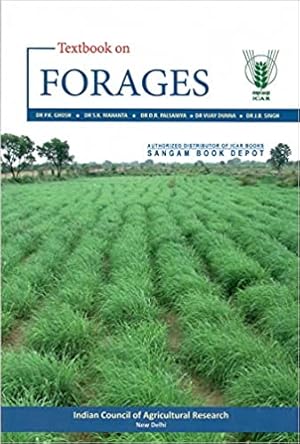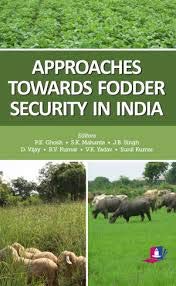P K Ghosh S K Mahanta D R (2 results)
Product Type
- All Product Types
- Books (2)
- Magazines & Periodicals
- Comics
- Sheet Music
- Art, Prints & Posters
- Photographs
- Maps
-
Manuscripts &
Paper Collectibles
Condition
- All Conditions
- New
- Used
Binding
Collectible Attributes
- First Edition (1)
- Signed
- Dust Jacket
- Seller-Supplied Images (1)
- Not Printed On Demand
Seller Location
Seller Rating
-
Textbook on Forages
Published by Indian Council of Agricultural Research, 2022
ISBN 10: 8171642241ISBN 13: 9788171642243
Seller: Vedams eBooks (P) Ltd, New Delhi, India
Book
Soft cover. Condition: New. Livestock and forage sector is the backbone of Indian agriculture, looked at to enhance productivity, impact stability, and double farmers income. Livestock sector contributes nearly 4.4% to the total GDP. But, Indian animals are low yielders due to lack of quality feed and fodder and poor genetic potential. Currently, India faces a net deficit of green fodder, dry crop residues and feed. This calls for a need to understand the forage scenario of the country to ensure supply of quality fodder by adopting sustainable production and conservation techniques. The Textbook on Forages is designed to provide adequate and up-to-date information on overall forage management. The book is divided into ten chapters covering different aspects, viz. Introduction to forage and livestock resources of India; Kharif, Rabi and perennial forage crops; Grazing resources and their management; Forage processing, conservation and utilization; Farm machinery; Non-conventional forage resources; Issues and strategies, etc. to give in-depth details and provide comprehensive understanding of the subject with latest facts.
-
Approaches Towards Fodder Security in India
Published by Studera Press, 2017
ISBN 10: 9385883437ISBN 13: 9789385883439
Seller: Vedams eBooks (P) Ltd, New Delhi, India
Book First Edition
Hardcover. Condition: New. 1st Edition. Forage based economical feeding strategies are required to reduce the cost of quality livestock product as the feed resources alone constitutes 60-70% of the milk production cost. Thus, any effort of enhancing fodder availability and economizing the feed cost results in increased margin of profits. There is tremendous pressure of livestock on available fodder resources, as land available for fodder production has been decreasing. At present, India faces a net deficit of 35% green fodder and 10% dry crop residues. To meet the current level of livestock production and its annual growth in population, the deficit in fodder resources needs to be met either by increasing productivity, utilizing untapped fodder resources, increasing land area (may not be possible due to human pressure for food crops) or through imports. Indeed, in the world of changing socio-economic and environmental scenario, there are diverse challenges and constraints for fodder security and sustainable livestock production to meet the requirements of ever increasing human beings. A considerable amount of work has been done on different aspects of forage production and grassland management, forage processing and utilization at different organizations of India and elsewhere. In this edited book, an attempt has been made to organise the available pertinent information or approaches of enhancing fodder production and efficient utilization by researchers from various organizations. Being introduced with the forage and livestock scenario in India, this book contains adequate information on optimizing forage production, alternate land use systems for forage production, advances in forage crop improvement and seed production and forage utilization and socioeconomic aspects including value addition and fodder marketing, green house gas emissions and climate change mitigation. It is expected that this book will be highly useful to researchers, teachers, students, policy makers and livestock farmers.



